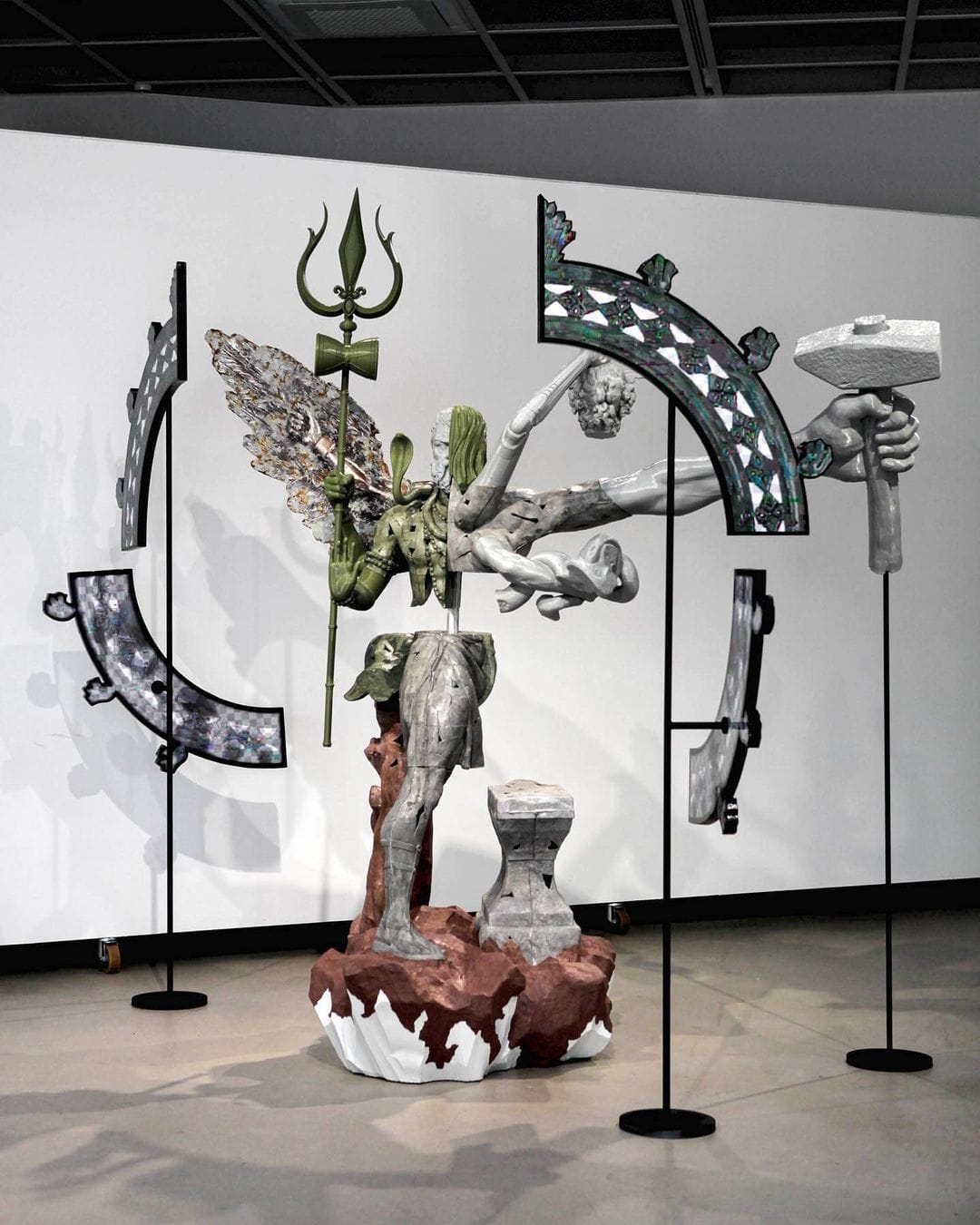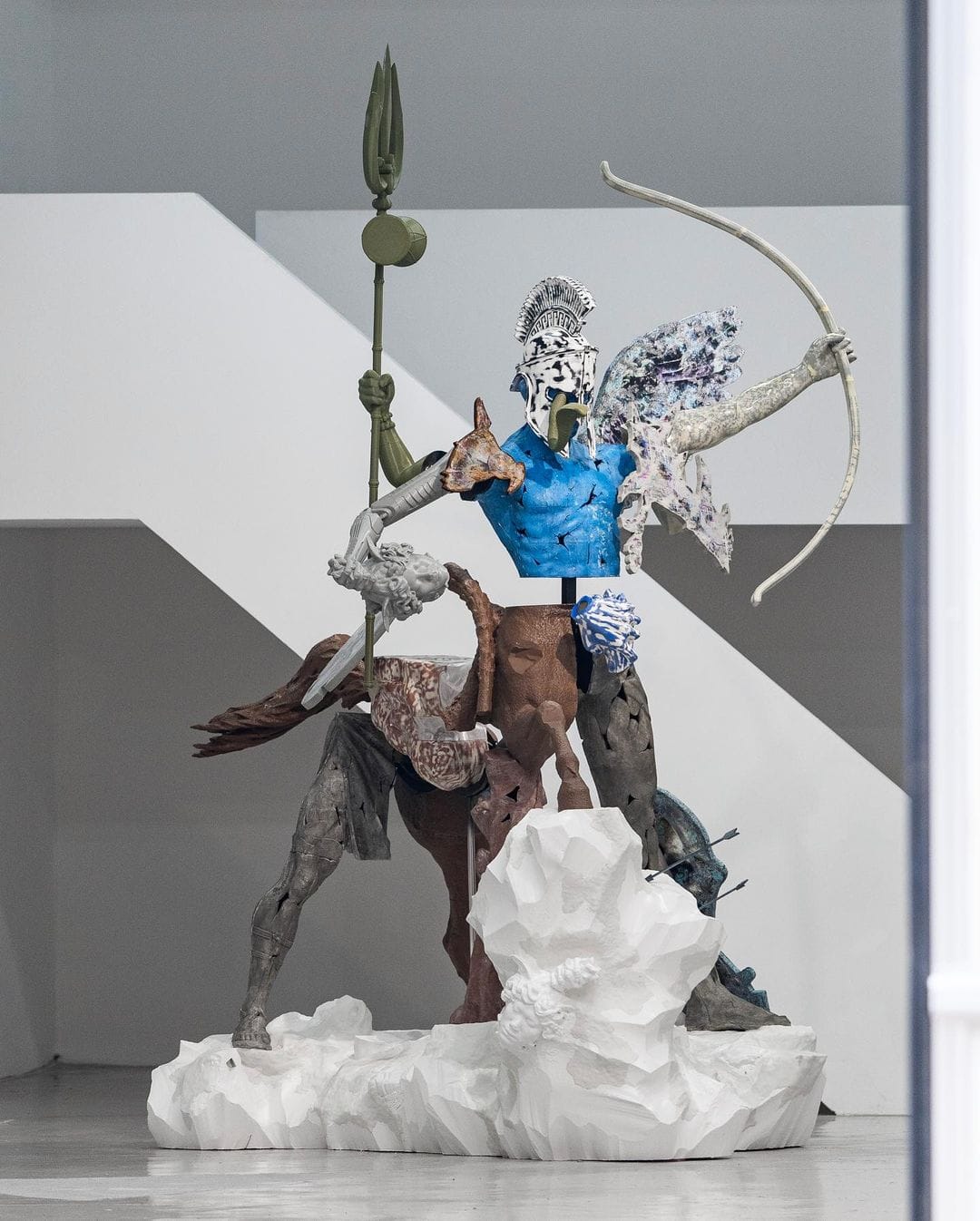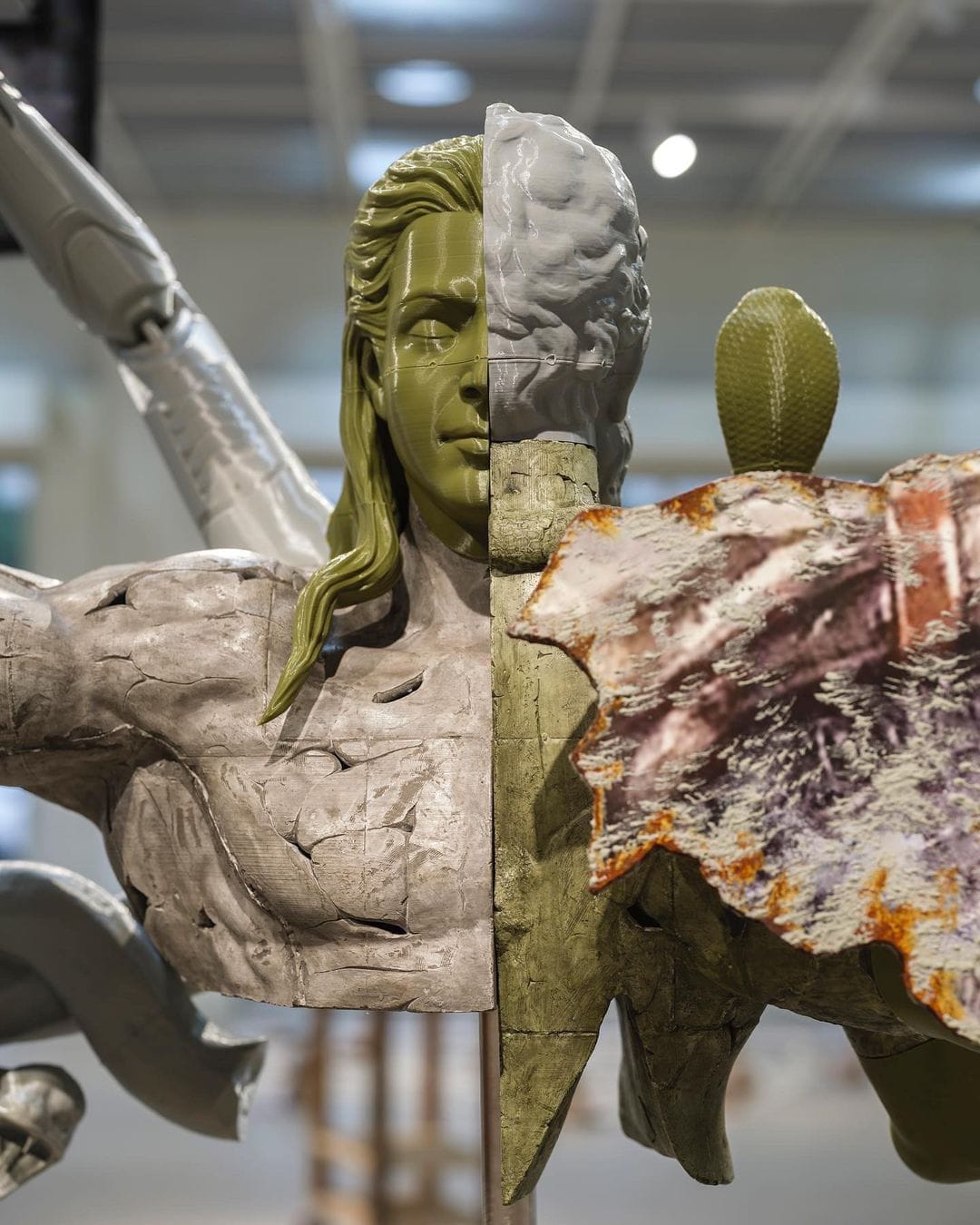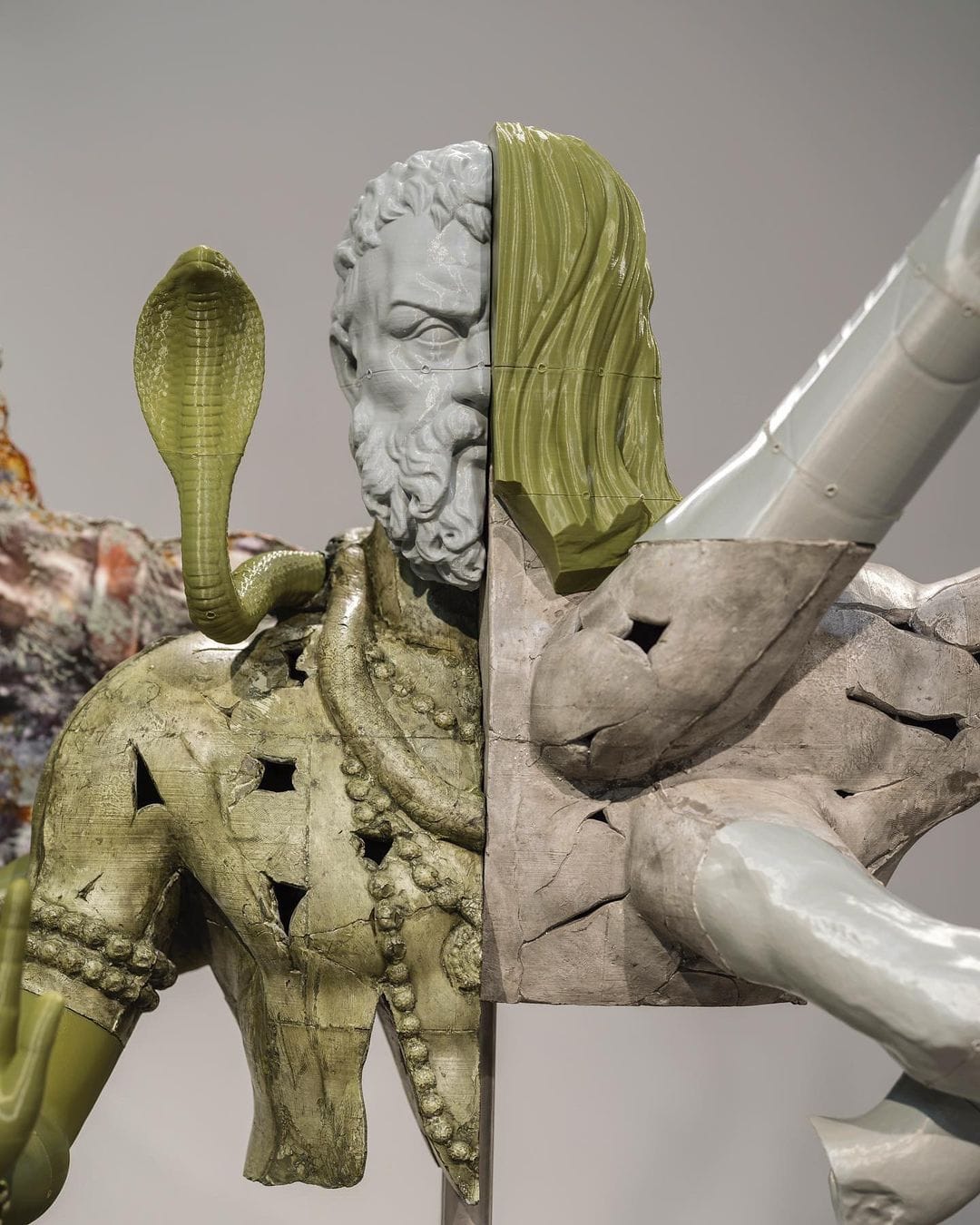South Korean artist Jeong Seong-Jin creates modular sculptures of mythological and religious hero figures that combine elements from different cultures around the world. These sculptures show how, despite differences in cultural backgrounds and aesthetics, people from various parts of the world strive towards the same positive values—values embodied in the depicted hero figures. These figures triumph over the bad and strive for the good of the many; they champion the best sides of humanity.

Jeong’s sculptures also include design elements from heroes found in video games. This adds another layer of meaning that calls for the positive values of hero figures to be carried into today’s digital age. This is why the modular sculptures by Jeong Seong-Jin are relevant to the United Nations Sustainable Development Goals of Reduced Inequalities and Peace, Justice, and Strong Institutions.

Take Jeong’s sculpture, COUNTER GADGET, as an example of his typical modular sculpture. This particular sculpture has the head, torso and hand of Lord Shiva, the Hindu god of destruction. He is easily recognized by his trishul (trident) and snake looped around his shoulders. Lord Shiva has been spliced with the head, torso and hand of Hephaestus, the Greek God of craftsmanship, easily recognized by the hammer in his hand and anvil laid by his feet.

Like any other modular sculpture by Jeong, COUNTER GADGET is not concerned with how the different cultures depicted have interacted historically. It is more concerned with the similarities that exist between the depicted mythological heroes, or in this case, Gods. Both Lord Shiva and Hephaestus are considered to be builders. They are symbols of humanity’s ability to create and mould their surroundings to suit their needs. As customary, these figures call for developments to be carried out for the good of the many and also for the surrounding nature.

Jeong Seong-Jin’s modular hero sculptures illustrate the shared values across different cultures by merging elements from mythological figures like Lord Shiva and Hephaestus. These artworks emphasize humanity's shared goal of overcoming challenges for the greater good, showcasing a universal connection despite cultural differences. By integrating design aspects from ancient mythology and modern video games, Jeong calls for these heroic values to transcend into today's world. In these globalized times, when people are moving across borders at a pace never before seen, Jeong’s sculptures promote unity despite cultural differences and the pursuit of progress for all of humanity.
Find out more about modular sculptures and other pieces by Jung Sung-jin on his Instagram @diny_sj.
